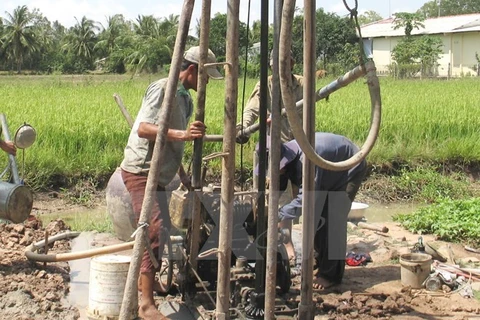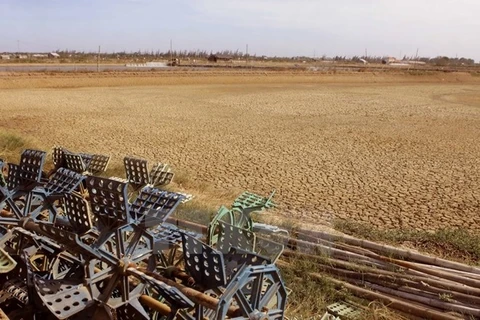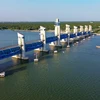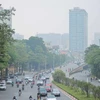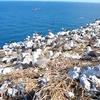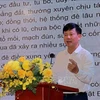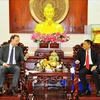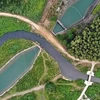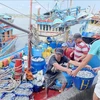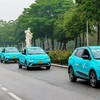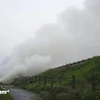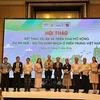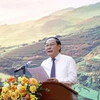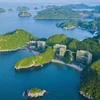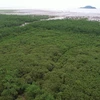HCM City (VNA) – Dau Tieng reservoir has begun to release water at 30 cubic metres per second on the Saigon River, providing water for HCM City’s residents.
Water from the Dong Nai and Saigon rivers, which provide most of the city’s water, has not met the standard, especially the salinity rate, for several periods this year, according to data from the Southern Hydro-Meteorological Station.
The maximum permitted salinity rate is 250mg per litre. The excessive salinity rate has affected the operations of water treatment plants.
The Saigon Water Corporation (Sawaco) has reported that some big water treatment plants including Tan Hiep, Binh An and Thu Duc had to cease operations several times or face difficulties in treating water due to excessive salinity.
Sawaco forecasts that saltwater intrusion will continue to affect the city’s water supply system at least until April.
According to the Dau Tieng-Phuoc Hoa Irrigation Exploitation Company, this is the fifth time the company has released water from the Saigon River since the beginning of this year.
The release is to help downstream water treatment plants cope with the high salinity rate, which has been increasing rapidly.
Salinity in Nha Be district in February was 30-40 percent higher year-on-year, and around 80 percent higher than the average a few years ago, according to data of the city’s Department of Agriculture and Rural Development’s Bureau of Irrigation and Flood and Storm Prevention.
Sawaco is building a plan to build a raw water reservoir in Cu Chi district.
In case the salinity rate in Dong Nai and Saigon rivers is too high, the plants can draw water from the reservoir instead of from the rivers.
Pham The Vinh, officer of the Southern Institute of Water Resource Research, blamed the drought and salinity intrusion on the ongoing El Nino phenomenon, which has reduced rainfall in the southern region.
It has also been caused by the flood tides in March. This has pushed saltwater further into the estuaries.
According to the Ministry of Agriculture and Rural Development, the water level in the upper Mekong River continues to fall rapidly, reaching the lowest level in the past 90 years.
In the main rivers in the western region, saltwater has intruded 40 to 93km deep into estuaries, an increase of 10-15km compared to previous years.
Around 340,000ha of total 1.55 million hectares of winter-spring rice produced in the western region face danger of saltwater intrusion.
Of that number, around 104,000ha were seriously damaged and thousands of hectares were destroyed.
In the face of an urgent situation, Prime Minister Nguyen Tan Dung has required the entire political system to take part in helping people combat the effects of saltwater intrusion.
The Prime Minister has also asked China to discharge water from their dams on the Mekong River.-VNA


